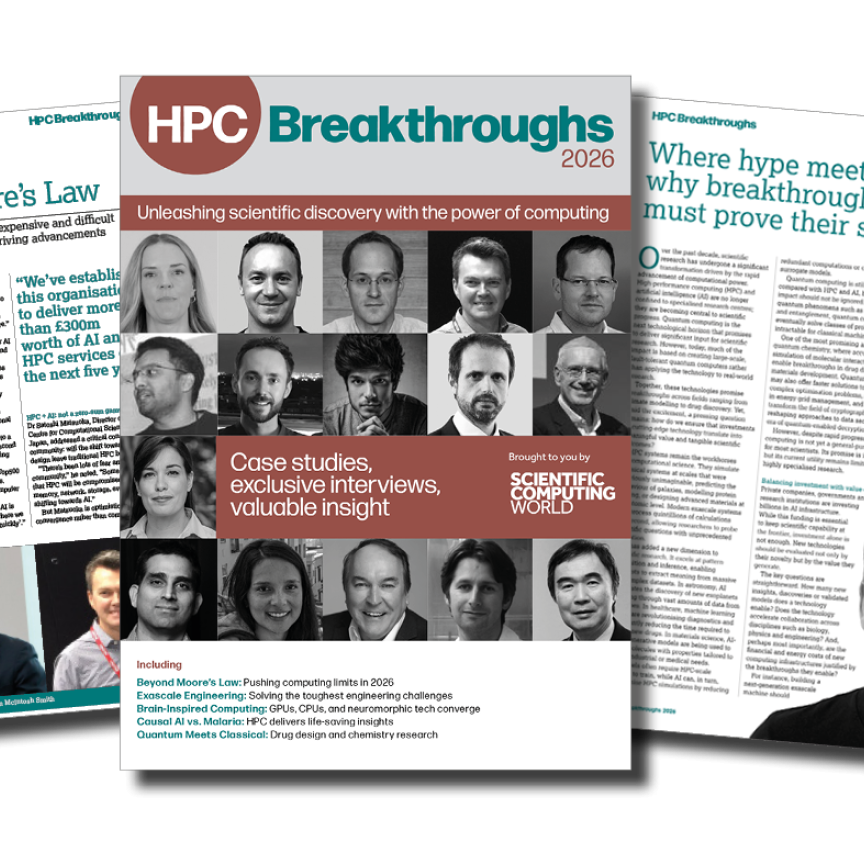The 23rd annual International Supercomputing Conference (ISC'08) has been hailed as the most successful ISC in the conference's history, with a record attendance of almost 1,400 HPC industry leaders, IT specialists and scientists from around the world congregating at the Congress Center in Dresden. The conference, which took place from 17-20 June, had increased in size from last year's show, completely filling the 1,020 square metres of the available exhibition space and included exhibits ranging from industry powerhouses such as Intel, Microsoft, IBM, and HP to smaller companies.
Among the highlights of ISC'08 was the introduction of the first petascale computer on the 31st Top500 list of the world's most powerful supercomputers. The new number one system, built by IBM for the US Department of Energy's Los Alamos National Laboratory (LANL) and named 'Roadrunner' after the state bird of New Mexico, achieved a performance of 1.026 Petaflop/s (1.026 quadrillion floating point operations per second). The Roadrunner system is based on the IBM QS22 blades, which are built with advanced versions of the processor used in the Sony PlayStation 3.
For the first time, the Top500 list also provides energy efficient calculations for many of the computing systems, and Roadrunner is rated highly here too.
The top five positions are made up of IBM's BlueGene/L and /P systems in second and third places respectively, the Sun SunBlade x6420 'Ranger' system in fourth, and the Cray XT4 'Jaguar' in fifth position. The US is the leading consumer of HPC systems, with 257 of the 500 systems, including the those in the top five, being based there. Europe has 184 systems and Asia 48.
In addition to discussion surrounding the Roadrunner supercomputer, IBM demonstrated its iDataPlex HPC nodes, specific high-density systems, as well as its BladeCenter QS22 cell processor-based blade server. Hewlett-Packard was showcasing the world's first two-in-one server blade, the HP ProLiant BL2x220c – two independent servers in a single blade configuration, which offers double the compute power while reducing cooling and power costs.
PRACE (Partnership for Advanced Computing in Europe) took an active role in the conference proceedings, hosting a Birds-of-a-Feather session and presenting an award for the best scientific paper submitted to ISC'08 by a European student or young scientist on petascaling. The authors of the winning paper were Stefan Turek, Dominik Göddeke, Christian Becker, Sven Buijssen, and Hilmar Wobker from the Department of Applied Mathematics, Dortmund University of Technology for their work on UCHPC (unconventional high performance computing for finite element simulations).
The achievements and objectives of the European Grid Initiative Design Study (EGI_DS), which represents an effort to establish a sustainable grid infrastructure in Europe, were also presented at ISC'08. The EGI_DS project director Dieter Kranzlmüller gave a joint presentation with the dissemination advisor of Distributed European Infrastructure for Supercomputing Applications (DEISA), Wolfgang Gentzsch entitled Supercomputers or Grids: That is the Question, which dealt with issues related to the construction of a sustainable grid infrastructure in Europe.
Exhibitors included Acumem, which showcased its SlowSpotter multicore performance analysis tool, designed to boost HPC application performance by two to three times. Mitrionics previewed its FPGA-based green computing and hybrid computing strategies for HP platforms. ADVA Optical Networking and Voltaire were present at the conference, detailing an integrated capability to extend InfiniBand connections to 50km without performance degradation, while Fujitsu Systems Europe and NICE announced a joint technology solution for distributed computing and data environments.
Next year's ISC will be held 23-26 June 2009 at the Congress Center in Hamburg, Germany.

